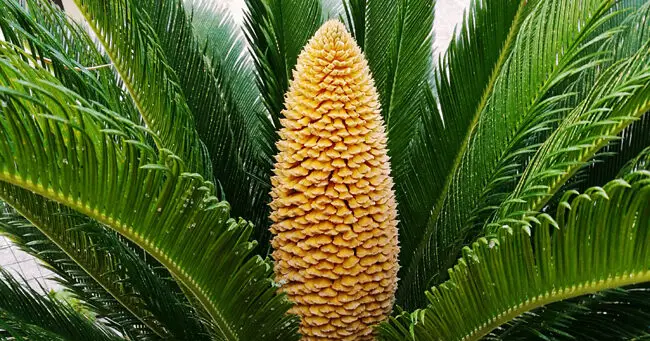The Japanese cycas, also known as Japanese sago, or sago tree, have, despite their resemblance, no relation to the palm tree. In certain physiological aspects, they are closer to conifers (mode of reproduction). Like the latter and like ginkgos, they represent the first stages of plant evolution.
The sago palm is a shrub with a small stocky trunk, from one to three meters high, marked by the presence of old leaves. At its tip, like a palm tree, the dark green, finely cut, tough and evergreen leaves are borne.
Contents
Planting of the sago palm
Planting or repotting for potted sago palm are important steps because they condition the good recovery and growth of the cycas.
Sago palm in pot or tub
Cycas requires a good soil that you can mix with 1/3 of compost if you have any.
To facilitate drainage, place a bed of gravel, small stones or clay balls at the bottom of the pot.
This will prevent the roots from swimming in the water, which could be fatal.
- Install it in a good size pot filled with special potting soil for houseplants or green plants.
- Although it is necessary to repot it in the spring every 2 to 3 years, apart from that, prefer a regular surfacing which will fill perfectly the need of the plant in support of culture.
Sago palm outdoor
As with pot planting, do not hesitate to lay a bed of gravel, small pebbles or clay beads to facilitate drainage.
You will then plant it in a mixture of potting soil, garden soil and sand.
Generally speaking, most cycas do not tolerate cold temperatures except for the cycas revoluta which readily accepts temperatures close to or below 32°, even up to 14°F.
Where to install the sago palm?
The greatest requirement of the sago palm is its need for light. The ideal is to offer it a bright but indirect sunshine, as well as a temperature between 64 and 70°F. Under these conditions, the plant can form a leaf all year round.
However, the cycas can withstand a harsher climate but below 37°F its foliage will be affected; above 14°F, it dies.
Cultivation and maintenance
Sago palm is relatively easy to grow; take it out in the summer and water it frequently to keep the soil moist. In winter, you can let the soil dry for 1 inch before watering again.
Only repot the cycas when their roots overflow from the pot, i.e. about every three years; handling tends to stress them. Don’t forget to place a bed of gravel or clay balls at the bottom of the pot to ensure drainage; stagnant water is strongly discouraged.
Propagation is done either by sowing or by separating the rejects; whatever the chosen method, the operation remains delicate.
Watering the plant
Watering must be regular; the substrate must dry on the surface between waterings. Watering every 2 or 3 days is often the right pace.
In spring and summer
This is generally the growth period for the cycas.
Water regularly while allowing the topsoil to dry between waterings.
Watering should be regular but measured so as not to asphyxiate the plant’s roots.
It can be said that watering every 2 to 3 days is often necessary.
- Every fortnight, you can bring him liquid fertilizer, taking care to moisten the soil beforehand.
From autumn and winter
Start by gently reducing the watering as the plant has more limited needs.
As soon as the soil becomes dry for a few centimetres, water so as to moisten all the soil.
A watering every two weeks should be sufficient.
But it also depends on the location of your sago palm, if it is in full sun, its needs may be more important.
- It is necessary to stop all fertilizer application from October until March-April.
Pruning the sago palm
Every year or every 2 years, the shrub will issue a new crown of leaves to replace those that are in place and eventually turn yellow. It is thus necessary to cut these yellowing leaves at the base to allow the new ones to develop and to preserve the plant its beautiful presence.
Parasites and diseases of the sago palm
Fairly hardy, the cycas are generally quite resistant to most diseases, but some problems can nevertheless occur.
Deformed sheets
This is undoubtedly due to a lack of light or an excess of water.
- Find a brighter location and reduce watering by following our tips above.
Leaves turn yellow
If the plant continues to make new leaves, this is the natural evolution of your cycas. Trees, even when they are persistent, lose their leaves to renew them.
- So you can let them dry on your sago palm and then fall down or cut them as you go along.
- If no new shoots appear and your cycas look gray, pay attention to watering and draining and possibly bring the plant a liquid fertilizer every 15 days.
Summary
The sago palm (also called cycas, or cycas of Japan) is a plant appreciated indoors or on a terrace when grown in a pot. Endowed with a short trunk and a beautiful shiny foliage making it look like a palm tree, the cycas is an easy plant to grow.









